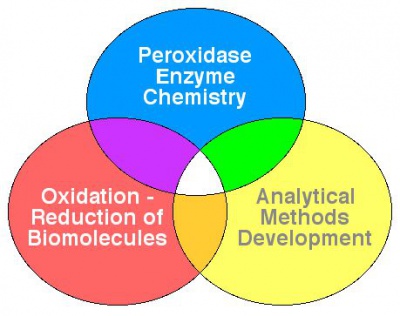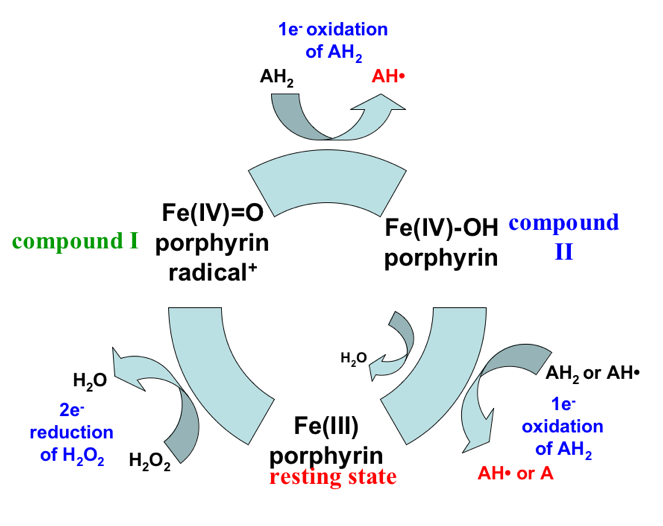Difference between revisions of "Sturgeon Research"
| Line 1: | Line 1: | ||
| − | Our group is | + | Our group is engaged in activities which will assist in the understanding of how small organic molecules interact with biological systems. Our research goals can be understood in the context of a pharmacological theory called [https://en.wikipedia.org/wiki/ADME ADME]. ADME stands for: '''A'''bsorption, '''D'''istribution, '''M'''etabolism, and '''E'''xcretion. ADME generally applies to humans and drugs (small organic molecules) and strives to answer the following: |
| + | :How is the drug '''absorbed''' into the body? | ||
| + | :How does this drug '''distribute''' throughout the body? | ||
| + | :How is the drug '''metabolized''' within the body? | ||
| + | :How is the drug '''excreted''' from the body? | ||
| + | |||
| + | Pharmaceutical companies are actively engaged in finding small organic molecules (drugs) that can modulate the human condition (performance, health, etc). With each new drug, extensive ADME data collection is done in order to understand how these drugs ''might'' affect the patient. As you might image, the interaction between a drug and a given patient is highly complex and as a result, pharmaceutical companies are not required to FULLY understand all of these ADME aspects, but do need to present a case to the [https://en.wikipedia.org/wiki/Food_and_Drug_Administration FDA] so that they will allow the drug to be administered to patients. The interactions between a pharma company and the FDA is complex, starting with the pharma company submitting information to the [https://en.wikipedia.org/wiki/Investigational_New_Drug Investigational New Drug (IND) program]. After review, the pharma company then submits a [https://en.wikipedia.org/wiki/New_drug_application New Drug Application (NDA)]. The filing of an NDA will lead to human clinical trials and ultimately a prescription drug. | ||
| + | |||
| + | |||
'''The focus of research done in the Sturgeon labs falls under 3 main areas:''' | '''The focus of research done in the Sturgeon labs falls under 3 main areas:''' | ||
Revision as of 13:12, 28 August 2016
Our group is engaged in activities which will assist in the understanding of how small organic molecules interact with biological systems. Our research goals can be understood in the context of a pharmacological theory called ADME. ADME stands for: Absorption, Distribution, Metabolism, and Excretion. ADME generally applies to humans and drugs (small organic molecules) and strives to answer the following:
- How is the drug absorbed into the body?
- How does this drug distribute throughout the body?
- How is the drug metabolized within the body?
- How is the drug excreted from the body?
Pharmaceutical companies are actively engaged in finding small organic molecules (drugs) that can modulate the human condition (performance, health, etc). With each new drug, extensive ADME data collection is done in order to understand how these drugs might affect the patient. As you might image, the interaction between a drug and a given patient is highly complex and as a result, pharmaceutical companies are not required to FULLY understand all of these ADME aspects, but do need to present a case to the FDA so that they will allow the drug to be administered to patients. The interactions between a pharma company and the FDA is complex, starting with the pharma company submitting information to the Investigational New Drug (IND) program. After review, the pharma company then submits a New Drug Application (NDA). The filing of an NDA will lead to human clinical trials and ultimately a prescription drug.
The focus of research done in the Sturgeon labs falls under 3 main areas:
General Research Areas
|
Student Research Project = x% A + y% B + z% C
|
Oxidation/Reduction of Biomolecules
Oxidation/Reduction of Biomolecules
Peroxidase Enzyme Chemistry
http://chemwiki.ucdavis.edu/Core/Biological_Chemistry/Catalysts/Case_Studies/Horseradish_Peroxidase
Analytical Methods
Specific Research Details
General Initiatives
Monmouth Microbiome Initiative
Peroxidase Involvement in Biotransformation

